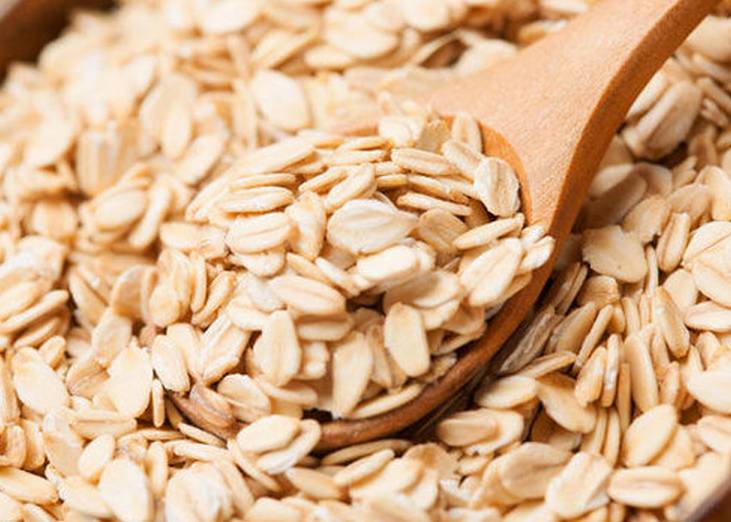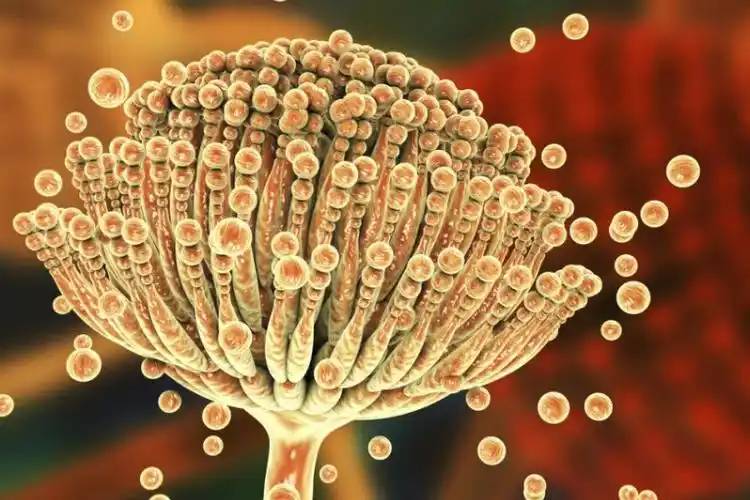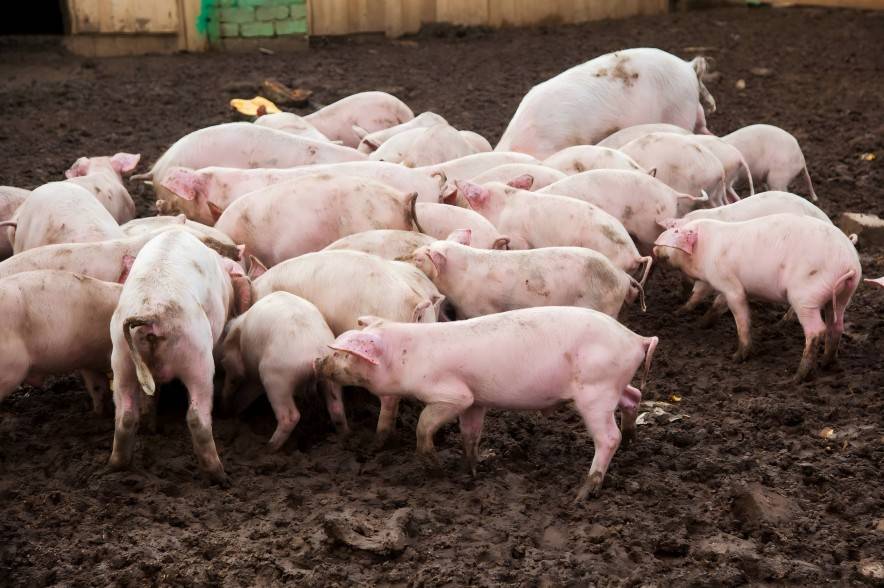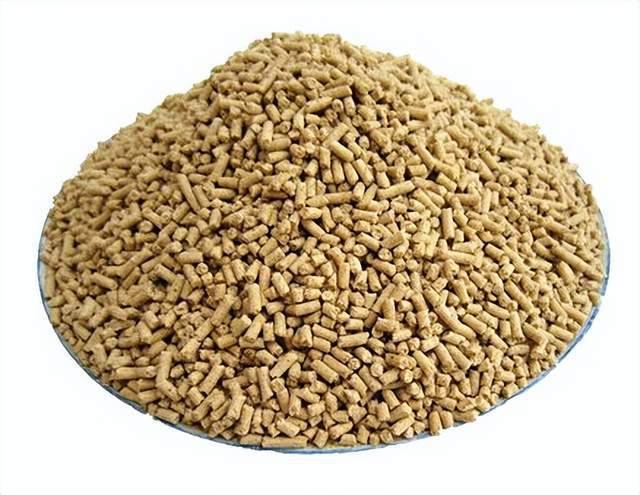What Is the Use of Yeast Beta Glucan in Pig Feeding?
Beta-glucan is a type of non-starch polysaccharide made up of D-glucose monomers linked by beta-glycosidic bonds. It has long been considered an anti-nutritional factor in traditional animal nutrition and is thought to affect the digestion and absorption of monogastric animals. However, in recent years, research has gradually revealed that some β-glucans have beneficial effects in humans and animals, which are mainly determined by their source and structure. The source of β-glucans determines the structure, and the structure affects the activity (Lee et al., 2021). β-Glucans come from a variety of sources and can be divided into two types: cereal or non-cereal.
Cereal sources include oats, barley, etc., while non-cereal sources include mushrooms, yeast, algae, bacteria, etc. The structure of β-glucan can be unbranched or branched. The common feature is that the main chain is connected by 1,3 glycosidic bonds, and the branches usually occur at the 1,4 or 1,6 position (Du et al., 2019; Zhang et al., 201 8). β-Glucans of cereal origin are usually composed of β-1,3 and β-1,4 glycosidic linkages, while β-glucans in yeast and fungal cell walls are composed of β-1,3 and β-1,6 glycosidic linkages (Du et al., 2019). Yeast is a unicellular fungus. Yeast cells are rich in β-glucan, of which β-1,3-glucan accounts for 33% to 60%, and β-1,6-glucan accounts for 10% to 15% of the yeast cell wall polysaccharides (Bastos et al., 2022).

Yeast β-glucan has more β-1,6-glycosidic bonds than β-glucan from other sources, and has stronger biological activity, making it one of the most studied glucans. Studies have shown that yeast β-glucan has the functions of improving the intestinal environment, stimulating innate and acquired immunity, adsorbing mycotoxins, promoting wound healing, preventing cancer, and anti-oxidation, lowering blood sugar and blood lipids (Vetvicka et al., 2020). This paper reviews the biological functions of yeast β-glucan and its application in animals in recent years, providing a reference for its promotion and application in animal husbandry.
1 Biological functions of yeast β-glucan
1.1 Enhances immunity
Beta-glucan powder can regulate the body's immune system by enhancing the activity of white blood cells, phagocytic activity, antioxidant immune responses, and the expression of immune-related genes. However, beta-glucan's participation in specific and non-specific immunity requires binding to receptors. There are four common receptors, the first of which is the C-type lectin receptor Dectin-1. Dectin-1 is a pattern recognition receptor (Mentrup et al. 2022; Miriam et al. 2018), which is expressed on monocytes, macrophages, neutrophils, dendritic cells and T lymphocytes and is activated upon binding to β-glucans (Kalia et al. 2021).
Activation of Dectin-1 triggers the nuclear factor κB (NF-κB) pathway, which induces the synthesis of cytokines via a SYK-dependent pathway, including the NF-κB-inducing kinase (SYK-NIK) pathway or a SYK-independent pathway, such as the ras-related factor-1 (RAF-1) pathway (Carloto et al., 2022; Haas et al., 2017). Second, complement receptor 3 (CR3) is the second receptor that recognizes β-glucan. This receptor is mainly expressed in natural killer (NK) cells, dendritic cells, macrophages, and neutrophils, and is involved in the recognition of endogenous ligands (Geller et al., 2019). Third, the third receptor that recognizes β-glucan is the Toll-like receptor (TLR), which is an important class of protein molecules involved in non-specific immunity. After recognizing β-glucan, TLR2, 4 and 6 bind to Dectin-1 together to regulate immune activity (Miriam et al., 2018). Finally, β-glucan also reduces inflammation by activating the sialic acid-binding immunoglobulin-like lectin 2 (CD22) receptor, regulating the MAPK pathway and negatively regulating B cell activation (Penney et al., 2019).
Yeast β-glucan enhances humoral immunity and may directly or indirectly activate key immune cells involved in both nonspecific and specific immunity, including helper cells, helper T cells, and B cells. Activated helper T cells secrete cytokines (IFN-γ and IL-12) that support the B cell response, leading to the production of more cytokines and antibodies (Walachowski et al., 2017), ultimately stimulating the body to produce an immune response. Yeast β-glucan can significantly increase the concentration of serum cytokines and immunoglobulin A (IgA) in piglets (Zhou et al., 2022), and increase the concentration of immunoglobulin G (IgG) in the serum of piglets challenged with enterotoxigenic Escherichia coli (ETEC) (Zhou et al., 2022).

In addition, yeast β-glucan can significantly improve the spleen and thymus index and lymphocyte proliferation, effectively increase the percentage of T cells CD4+, reduce the percentage of T cells CD8+, and increase the CD4+/CD8+ ratio (Lei et al., 2015). Beta-glucan can also activate macrophages, regulate the secretion of tumor necrosis factor-alpha (TNF-α) and interleukins (ILs) in macrophages and dendritic cells, increase the amount of lysozyme in macrophages and enhance the phagocytic capacity of white blood cells (Aazami et al., 2019; Tao et al., 2015). In terms of anti-inflammation, yeast β-glucan can significantly promote the secretion of anti-inflammatory factors IL-2 and γ-interferon (IFN-γ) (Lei et al., 2015), reduce the release of inflammatory mediators such as nitric oxide (NO), IL-1β, IL-6 and TNF-α to change the inflammatory response stimulated by LPS (Carloto et al., 2022; No et al., 2021 ), as well as reducing the inflammatory response caused by ETEC stimulation, which increases the concentration of TNF-α in piglet serum (Zhou et al., 2022). Beta-glucan induces the mRNA expression of defensin 1 and complement C3, while also reducing the transcriptional level of major histocompatibility complex-I (MHC-I) (Akhtar et al., 2021), and can also induce the expression of endogenous beta-defensins, antimicrobial peptides and the gene for hepatic antimicrobial peptide-2 in the jejunum and the spleen, and induce the expression of endogenous β-defensins, antimicrobial peptides and the gene for hepatic antimicrobial peptide-2 (Shao et al., 2016). It participates in both specific and non-specific immunity and ultimately improves the overall immunity of the body.
1.2 Regulates the intestinal flora
Beta-glucan can increase the richness and diversity of the intestinal flora. Since animals lack β-glucanase, β-glucan cannot be digested and absorbed in the small intestine, and can only be degraded and metabolized by various bacteria in the large intestine to produce volatile fatty acids, which exert different effects on the flora.
β-Glucan can regulate the structure and composition of the intestinal flora by inhibiting the proliferation of harmful intestinal flora and promoting the growth of beneficial intestinal flora. In experiments on piglets, yeast β-glucan was shown to significantly reduce the relative abundance of the WPS-2 phylum in the colonic digesta of finishing pigs (He et al., 2022), increase the abundance of lactobacilli in the gut of weaned piglets, and reduce the abundance of Enterobacteriaceae and Campylobacteraceae (Conway et al., 2022). The addition of β-glucan significantly increased the abundance of lactobacilli and the concentration of intestinal propionic acid in response to ETEC stimulation (Zhou et al., 2022). Under normal circumstances, the bacterial community in the host intestine is in a dynamic balance. When harmful bacteria enter the intestine, they adhere to the intestinal mucosa, disrupting the intestinal flora and damaging the intestinal mucosa, which further affects the health of the host. However, β-glucan can exert an antibacterial effect by destroying the cell membrane and cell wall of bacteria, increasing the permeability of the cell membrane, or interfering with the metabolism of bacteria (Khan et al., 2016), thereby achieving a bacteriostatic effect.
1.3 Regulating digestive capacity
The intestine is an important part of the digestive system for monogastrics and young ruminants, and it is here that nutrients are digested and absorbed. Beta-glucan mainly improves the animal's digestive capacity by improving the morphology of the digestive tract, the activity of digestive enzymes and the health of the intestines.

Beta-glucan can improve the intestinal morphology of animals and enhance their ability to absorb nutrients. The height of the intestinal villi and the depth of the crypts are commonly used indicators of intestinal morphology, and nutrients can cause changes in intestinal morphology. Beta-glucan can increase the ratio of villus height to crypt depth in the jejunum (Zhou et al., 2022; Tao et al., 2015), as well as villus height in the duodenum and ileum (Dowley et al., 2022; Zhou et al., 2022; Luna et al., 2015). In summary, the main changes in the intestinal morphology of animals caused by β-glucan are concentrated in the duodenum, jejunum and ileum, and there is little reported effect on the large intestine. Further research is needed.
Beta-glucan can improve the activity of digestive enzymes and the ability of nutrient metabolism in the animal's digestive tract. Studies in monogastric animals have shown that ETEC infection in piglets reduces the activity of maltase, lactase and sucrase in the jejunum, but supplementing with beta-glucan can increase the activity of maltase in the duodenum and ileum under ETEC infection (Zhou et al., 2022). Beta-glucan can also improve the animal's ability to metabolize nutrients, such as increasing the animal's pyrimidine metabolism, purine metabolism, peptidoglycan biosynthesis, and fructose and mannose metabolism (He et al., 2022). The increase in digestive enzyme activity and improvement in nutrient metabolism enhance the animal's ability to digest nutrients.
Beta-glucan can accelerate intestinal peristalsis and repair intestinal damage. Beta-glucan enhances peristalsis in the gastrointestinal tract and improves the transport of nutrients (Jayachandran et al., 2018). Studies in mice have shown that feeding beta-glucan significantly increases the frequency of defecation, intestinal transit rate, fecal weight and mucin-2 expression, relieves constipation symptoms, and beta- glucan improves intestinal mechanical barrier damage and maintains mucosal integrity by promoting the expression of neurotransmitters including acetylcholinesterase and serotonin, as well as tight junction proteins in the intestinal epithelium (Chen et al., 2019).
Tight junction proteins are key to maintaining the intestinal barrier, regulating intestinal barrier permeability, and maintaining epithelial cell polarity. Claudin-1, occludin, and ZO-1 are widely expressed and key tight junction proteins in intestinal epithelial tissue. Adding β-glucan to piglets' diets significantly increased the expression levels of the main tight junction protein ZO-1 in the duodenum and ileum, and improved the expression levels of the tight junction proteins Claudin-1 and Occludin in the duodenum and jejunum (Zhou et al., 2022; Kim et al., 2019). The disruption of intestinal tight junctions may lead to increased intestinal epithelial permeability, causing harmful substances to enter the bloodstream and inducing various diseases. It is more meaningful to use β-glucan to improve intestinal health by regulating tight junction proteins in young animals with impaired intestinal function.
1.4 Improve the body's antioxidant capacity
Studies have shown that β-glucan can improve the antioxidant stress response of animals. Adding 200 mg/kg yeast β-glucan to the feed can significantly increase the activities of catalase (CAT), superoxide dismutase (SOD) and total antioxidant capacity (T-AOC) in the skeletal muscle of finishing pigs, and improve meat quality (He et al., 2022). Studies on other animals have shown that dietary supplementation with β-glucan can enhance antioxidant capacity, increase the expression of related genes, reduce susceptibility to bacterial attack, and enhance the animal's stress resistance to adverse external environments (Akhtar et al., 2021; Mokhbatly et al., 2020). Yeast β-glucan can also remove 1,1-diphenyl-2-picrylhydrazyl (DPPH), superoxide and hydroxyl radicals in vitro. Its scavenging ability is related to its molecular weight, with 12.9 kDa having the strongest antioxidant capacity (Lei et al., 2015). The β-1,3/1,6-glucan derived from agrobacterium has an anti-fatigue effect. Studies have found that it can improve the biochemical biomarkers associated with exercise fatigue and injury in mice, including lactic acid, blood urea nitrogen, creatine kinase, alanine aminotransferase and aspartate aminotransferase (Xu et al., 2018).

Under the stimulation of a harmful environment, the body's oxidation and antioxidant systems become imbalanced. Yeast β-glucan mainly improves the activity of antioxidant enzymes such as SOD, CAT, and glutathione peroxidase (GPx), improves the scavenging activity of hydroxyl free radicals and superoxide anions, reduces the content of malondialdehyde, etc., enhances the antioxidant capacity of the animal body, and resists lipid peroxidation (Yu Chunwei, 2 021; Cao et al., 2019). Saccharomyces cerevisiae β-glucan can reduce the release of IL-1β, IL-6 and TNF-α and the levels of cyclooxygenase-2 and nitric oxide synthase, thereby exerting an anti-inflammatory effect.
Saccharomyces cerevisiae β-glucan can activate antioxidant transcription factors to exert a pre-protective effect (Yu Chunwei et al., 2021). In addition, β-glucan also improves oxidative stress caused by adverse environments by regulating the Nrf2/HO-1/Trx signaling pathway (Yu Chunwei et al., 2021; Xu et al., 2018). β-Glucan can activate the Dectin-1-mediated Nrf2/HO-1 signaling pathway to inhibit the production of reactive oxygen species, NF-κ Bp65 and NOD-like receptor heat shock domain-associated protein 3 (NLRP3) expression and apoptosis, thereby exerting a protective effect on animal cells (Yu Chunwei et al., 2021). Therefore, targeting the Nrf2/HO-1 signaling pathway by activating it is expected to be a new way to treat oxidative stress-related diseases.
When animals are under stress, supplementing the diet with β-glucan can maintain a reasonable immune response, put harmful intestinal bacteria at a disadvantage, reduce the energy requirements for maintenance, and thus ensure higher weight gain and feed conversion ratio.
1.5 Reduce the harm of mycotoxins
The accumulation of mycotoxins in animals can lead to reproductive disorders, organ damage, immune suppression and reduced productivity. Wall-Martínez et al. (2019) found that 10% to 17% of deoxynivalenol (DON) and 3 0% to 70% of zearalenone (ZEN) was adsorbed by the yeast, and the adsorption capacity was closely related to the β-D-glucan content of the cell wall. The outstanding adsorption capacity of β-glucan can also be seen in the sausage test carried out by Chaharaein et al. (2021). Adding 3% β-glucan, which accounts for the weight of the raw material, to chicken sausages containing aflatoxin B1 of 15 μg/kg of chicken sausage, the aflatoxin B1 level in the sample decreased by 73.7% after 45 days (P < 0.05). In addition, Aazami et al. (2019) found that feeding 3 g of yeast beta-glucan per day to dairy goats can reduce the transfer of aflatoxin B1 from feed to milk, without adversely affecting milk yield, production performance and blood parameters. The effect is better than 5 g of yeast cell walls.
Beta-glucan reduces the harm of mycotoxins to animals, mainly through adsorption, degradation and antibacterial inhibition, with different mechanisms of action. In terms of adsorption, β-glucan has a unique single-helix or triple-helix structure that binds to mycotoxins in a complementary manner (Yiannikouris et al., 2004). Next, the hydroxyl groups on the hydrogen bonds between β-1,3-glucan molecules form chemical complexes with the hydroxyl, ketone, or lactone groups of mycotoxins . β-1,6-glucan can enhance its stability by increasing van der Waals forces (Wall-Martínez et al., 2019). In terms of biodegradation, β-glucan can biodegrade or metabolize mycotoxins into other compounds, such as β-zeatin and α-zeatin (Wall-Martínez et al., 2019). β-Glucan also has antifungal activity. β-Glucan derived from yeast can inhibit the growth of Aspergillus flavus, with a bacteriostatic ring (7.33±3.51) mm (Utama et al., 2021). Therefore, β-glucan can also be used as a mold inhibitor in animal feed when the cost is appropriate.
2. The effect of yeast β-glucan on pigs
With the increase in intensive farming density and the ban on the use of antibiotics in feed, pig farms are facing increased disease pressure and the need to find alternatives to antibiotics that can enhance animal resistance. β-Glucan has attracted widespread attention in recent years in animal application research due to its properties of improving immunity, regulating digestion, and enhancing antioxidant capacity.
2.1 Effect on pig health
Beta-glucan improves the resistance of pigs and its function of improving immunity and antioxidant capacity is inseparable. It is a relatively good functional additive for sub-healthy pig farms. Lee et al. (2021) fed piglets a diet containing 0.05% yeast cell walls (containing about 142.5 mg/kg of beta-glucan) for the first 2 weeks after weaning, which reduced the levels of the pro-inflammatory serum factors TNF-α and IL-1β (P < 0.05) on days 7 and 14 days. The serum levels of the pro-inflammatory factors TNF-α and IL-1β (P < 0.05) were reduced, and the expression of the pro-inflammatory factor TNF-α in the ileum was even lower (P < 0.05). The anti-inflammatory effect of β-glucan can also be demonstrated in experiments under stressful conditions. Kim et al. (2019) first infected piglets with Escherichia coli and then supplemented the diet with β-glucan. The results showed that the serum white blood cells, neutrophils, TNF-α, cortisol and bound globulins of piglets were significantly reduced (P < 0.05), and the mRNA expression of IL-1B, IL-6 and TNF-α in the ileal mucosa of piglets infected with Escherichia coli was significantly down-regulated (P < 0.05). were significantly down-regulated (P < 0.05).
Similarly, Dowley et al. (2022) found that daily supplementation of 1 g of casein hydrolysate and 1 g of yeast β-glucan during late pregnancy and lactation significantly reduced the expression of pro-inflammatory cytokine genes (IL-6/TNF/TGF-β) in the duodenum/jejunum of piglets at weaning (P < 0.05). In addition, yeast β-glucan can enhance the immune effect of pig vaccines. Pornanek et al. (2021) showed that adding 7.5% yeast molasses powder rich in β-glucan (14.7%) to the diet of growing pigs can increase the antibody titer 30 days after vaccination against swine fever, which is of great value in preventing swine fever virus. In summary, dietary supplementation with β-glucan can enhance the resistance of pigs when facing stress and reduce inflammatory responses, improving the health of pigs. This is of great significance in the current severe situation of pig diseases in China.

2.2 Effect on intestinal function of pigs
β-glucan can improve the intestinal epithelial barrier of pigs and maintain the integrity of the morphology and structure of a healthy intestine. On the one hand, it improves the intestinal morphology. Lee et al. (2021) found that feeding piglets with a diet containing 0.05% yeast cell walls (containing about 142.5 mg/kg β-glucan) for the first 2 weeks after weaning can significantly increase the duodenal villus height to crypt depth ratio, villus thickness and villus area, and the number of goblet cells in the duodenum and jejunum (P < 0.05). After the diet was supplemented with β-glucan, the intestinal permeability of piglets was reduced (P < 0.05) and the mRNA expression of intestinal barrier function genes (Claudin, occludin and MUC2) in the jejunal mucosa was significantly increased (P < 0.05) (Kim et al., 2019).
Lee et al. (2021) found that the addition of β-glucan to the feed of F18 E. coli-infected piglets could alleviate the diarrhea caused by this pathogen by enhancing intestinal integrity, and increased the gene expression of the Claudin family, Occludin, MUC1, INF-γ and IL-6 in the porcine ileum (P < 0.05). In addition, yeast β-glucan supplementation not only improves the health of the sow itself, but also has a beneficial effect on the intestinal health of the piglets born. Dowley et al. (2022) supplemented yeast β-glucan to late pregnant and lactating sows, and the intestinal morphology of piglets at weaning was also improved, with an increase in duodenal villus height (P < 0.05) and an increase in jejunal villus height and crypt depth increased, and the expression of the tight junction gene CLDN3 and mucin gene MUC2 decreased (P < 0.05).
Beta-glucan can improve the microbial structure of the gastrointestinal tract of weaned piglets. Supplementation with yeast cell walls containing about 142.5 mg/kg of beta-glucan increased the relative abundance of Prevotella and Roseburia in piglet feces (P < 0.05), improved nutrient digestibility and intestinal health (Lee et al., 202 1). In addition, yeast β-glucan supplementation to sows can also affect the gut microbiota of piglets. Dowley et al. (2022) supplemented late gestation and lactation sows with 1 g of casein hydrolysate and 1 g of yeast β-glucan per day, which increased the abundance of the Bacteroidetes phylum in sow feces, including Lactobacillus in sow feces, and also increased the abundance of Lactobacillus in weaned in weaned piglets (P < 0.05). In finishing pigs, Luo et al. (2019) reported that the addition of 100 mg/kg β-1,3/1,6-glucan from agrobacterium can improve the nutrient digestibility of finishing pigs (P < 0.05). This shows that adding β-glucan to the diet of sows or piglets can improve the intestinal epithelial barrier and bacterial flora structure of piglets, thereby more conducive to improving the digestion and absorption of nutrients by piglets and alleviating the digestion and absorption disorders caused by weaning of piglets in large-scale pig farms.
2.3 Effect on pig performance
Adding yeast β-glucan to pig diets can also enhance resistance, improve pig health, and help improve growth performance. Wu et al. (2018) added 200 mg/kg yeast β-glucan to piglet diets, which significantly increased the average daily weight gain of piglets stimulated by lipopolysaccharides (P < 0.05). Similarly, Zhou et al. (2022) found that after gavage with E. coli, the average daily weight gain of piglets fed a diet supplemented with 500 mg/kg yeast β-glucan tended to increase. Conway et al. (2022) found that the addition of yeast β-glucan to the diet of sows in the late stages of pregnancy or directly to the diet of piglets significantly improved feed efficiency, reduced the incidence of diarrhea, improved fecal consistency, and significantly increased the abundance of Lactobacillus in the intestine and significantly reduced the abundance of Enterobacteriaceae and Campylobacteraceae (P < 0.05). Lee et al. (2021) found that feeding piglets with a diet containing 0.05% yeast cell walls (approximately 142.5 mg/kg β-glucan) for the first 2 weeks after weaning, piglets fed a diet containing 0.05% yeast cell wall (containing about 142.5 mg/kg β-glucan) had a lower frequency of diarrhea (P < 0.10) and improved growth rate after weaning. Similarly, Kim et al. (2019) found that adding 108 mg/kg β-glucan to the diet of weaned piglets significantly (P < 0.05) reduced the frequency of diarrhea (29.01% vs. 17.28%). In finishing pigs, Luo et al. (2019) reported that the addition of 100 mg/kg β-1,3/1,6-glucan from agrobacterium can improve the growth performance of finishing pigs.

Of course, research on the application of yeast β-glucan in pigs has also yielded mixed results. Claudia et al. (2019) found that adding β-glucan and mannan to the diet of male piglets during the nursery period had no positive effect on average daily weight gain, average feed intake or diarrhea rate. Mukhopadhya et al. (2019) showed that adding 250 mg/kg bovine casein protein or 250 mg/kg yeast β-glucan had no effect on the body weight or daily weight gain of weaned piglets, but when added together, they increased body weight and average daily weight gain, achieving results similar to those of added zinc oxide. The different effects of yeast β-glucan on pig performance may be related to the health status of the pig herd. Overall, the effect of yeast β-glucan on improving the growth performance of pigs under stress is more obvious.
2.4 Effect on pork quality
β-glucan not only improves pig growth performance and health, but also has a beneficial effect on meat quality. He et al. (2022) added 100 mg/kg yeast β-glucan to the diet of finishing pigs, which reduced lactic acid concentration and the incidence of glycolysis in the longissimus dorsi muscle of the carcass, and significantly reduced cooking loss and drip loss of pork. Luo et al. (2019) also reported that the addition of 100 mg/kg agrobacterium β-1,3/1,6-glucan can improve the carcass length and pork quality of fattening pigs. However, there are relatively few studies on the improvement of meat quality by β-glucan, and whether the improvement of meat quality is related to antioxidant capacity needs to be further followed up.
3 Summary and outlook
Overall, adding 100 to 200 mg/kg yeast β-glucan to the diet can help improve the health of pigs, especially their resistance to bacteria and viruses. It can also help alleviate the stress caused by early and sudden weaning in large-scale pig farms, and reduce unnecessary production losses in farms with current no-antibiotic feeding and high disease pressure. However, yeast β-glucan is insoluble in water and has high technical requirements for extraction, resulting in high costs. In the future, on the one hand, it is necessary to continuously optimize the extraction technology to reduce production costs, and on the other hand, it is necessary to fully tap the existing industrial by-products containing yeast β-glucan, such as brewers' yeast fermentation lees rich in yeast-derived β-glucan or yeast fermentation products from other raw materials. By exploring the appropriate addition ratio, not only can the prebiotic effect of β-glucan be brought into play, but it also has great cost-effectiveness advantages and is worthy of attention.
References:
[1] Yu, Chunwei. The alleviating effect and mechanism of Saccharomyces cerevisiae β-glucan on oxidative stress, inflammation and apoptosis of RAW264.7 cells [D]. Inner Mongolia Agricultural University, 2021: 24 ~ 67.
[2] [2] Aazami M H,Nasri M H F,Mojtahedi M,et al.Effect of yeast cell wall and(1→3)-β-d-glucan on transfer of aflatoxin from feed to milk in Saanen dairy goats[J].Anim Feed Sci Tech,2019,254:114191.
[3] Akhtar M S,Tripathi P H,Pandey A,et al.β -Glucan modulates non-specific immune gene expression,thermal tolerance and elicits dis- ease resistance in endangered tor putitora fry challenged with aeromonas salmonicida[J].Fish Shellfish Immun,2021,119:154 ~ 162.
[4] Bastos R,Oliveira P G,Gaspar V M,et al.Brewer's yeast polysaccharides—A review of their exquisite structural features and biomedical applications[J].Carbohyd Polym,2022,277:118826.
[5] Carloto A C M,da Silva Bortoleti B T,Rodrigues A C J,et al. Botryosphaeran,[(1→3)(1→6)-β-D-glucan],induces apoptosis - like death in promastigotes of Leishmania amazonensis,and exerts a leishmanicidal effect on infected macrophages by activating NF -kB and producing pro-inflammatory molecules [J].Chem-Biol Interact , 2022,351:109713.
[6] Chaharaein M,Sadeghi E,Mohammadi R,et al.The effect of β - glucan and inulin on the reduction of aflatoxin B1 level and assess - ment of textural and sensory properties in chicken sausages [J].Curr Res Food Sci,2021,4:765 ~ 772.
[7] Chen Z Y,Lin S S,Jiang Y,et al.Effects of bread yeast cell wall beta -glucans on mice with loperamide -induced constipation [J].J Med.Food,2019,22:1009 ~ 1021.
[8] Claudia M D A,Gois F D,Carolina M D A,et al.Effects of di- etary beta - glucans,glucomannans and mannan oligosaccharides or chlorohydroxyquinoline on the performance,diarrhea,hematological parameters,organ weight and intestinal health of weanling pigs [J]. Livest Sci,2019,223:39 ~ 46.
[9] Conway E,O ’Doherty J V,Mukhopadhya A,et al.Maternal and/or direct supplementation with a combination of a casein hy- drolysate and yeast β-glucan on post-weaning performance and in- testinal health in the pig[J].PLoS ONE,2022,17(7):e0265051.
[10] Dowley A,O ’Doherty J V,Mukhopadhya A,et al.Maternal Supplementation With a Casein Hydrolysate and Yeast Beta-glucan From Late Gestation Through Lactation Improves Gastrointestinal Health of Piglets at Weaning[J].Research Square,2022,12:17407.
[11] Du B,Meenu M,Liu H,et al.A Concise Review on the Molecular Structure and Function Relationship of β -Glucan[J].IntJ Mol Sci,2019,20:4032.
[12] Geller A,Shrestha R,Yan J.Yeast-derived β -glucan in cancer: Novel uses of a traditional therapeutic [J].Int J Mol Sci ,2019 ,20(15):3618.
[13] Haas T,Heidegger S,Wintges A,et al.Card9 controls Dectin - 1-induced T-cell cytotoxicity and tumor growth in mice [J].Eur J Immunol,2017,47:872 ~ 879.
[14] He L,Guo J,Wang Y,et al.Effects of dietary yeast β -glucan supplementation on meat quality,antioxidant capacity and gut mi- crobiota of finishing pigs[J].Antioxidants,2022,11(7):1340.
[15] Jayachandran M,Chen J,Chung S S M,et al.A critical review on the impacts of β-glucans on gut microbiota and human health[J]. J Nutr Biochem,2018,61:101 ~ 110.
[16] Kalia N,Singh J,Kaur M.The Role of Dectin-1 in Health and Disease[J].Immunobiology,2021,226:152071.
[17] Khan A A,Gani A,Masoodi F A,et al.Structural,thermal,func- tional,antioxidant & antimicrobial properties of β-d-glucan extract- ed from baker's yeast(Saccharomyces cereviseae)—Effect of γ-irra- diation[J].Carbohyd Polym,2016,140:442 ~ 450.
[18] Kim K,Ehrlich A,Perng V,et al.Algae-derived β-glucan en- hanced gut health and immune responses of weaned pigs experimen- tally infected with a pathogenic E.coli [J].Anim Feed Sci Tech, 2019,248:114 ~ 125.
[19] Lee J J,Kyoung H,Cho J H,et al.Dietary yeast cell wall im- proves growth performance and prevents of diarrhea of weaned pigs by enhancing gut health and anti-inflammatory immune responses[J]. Animals,2021,11(8):2269.
[20] Lee C,Verma R,Byun S,et al.Structural specificities of cell surface β-glucan polysaccharides determine commensal yeast mediated im- muno-modulatory activities[J].Nat Commun,2021,12(1):1 ~ 16.
[21] Lei N,Wang M,Zhang L,et al.Effects of low molecular weight yeast β-glucan on antioxidant and immunological activities in mice [J].IntJ Mol Sci,2015,16(9):21575 ~ 21590.
[22] Luna U V,Caramori Júnior J G,Corrêa G S S,et al.Mannan Oligosaccharides and β-glucan in diets for weaned piglets[J].Arq Bras Med Vet Zoo,2015,67:591 ~ 599.
[23] Luo J,Zeng D,Cheng L,et al.Dietary glucan supplementation improves growth performance,carcass traits and meat quality of fin- ishing pigs.Anim Nutr,2019,5(4):380e5.
[24] Mentrup T,Stumpff-Niggenann A Y,Leinung N,et al.Phago- somal signalling of the C-type lectin receptor Dectin-1 is terminated by intramembrane proteolysis[J].Nat Commun,2022,13(1):1 ~ 18.
[25] Miriam A,Martha R B,Dariel T R,et al.Debaryomyces hansenii CBS 8339 β -glucan enhances immune responses and down -stream gene signaling pathways in goat peripheral blood leukocytes[J].Dev Comp Immunol,2018,88:173 ~ 182.
[26] Mokhbatly A A A,Assar D H,Ghazy E W,et al.The protective role of spirulina and β-glucan in African catfish(Clarias gariepinus) against chronic toxicity of chlorpyrifos:hemato -biochemistry,histopathology,and oxidative stress traits [J].Environ Sci Pollut R, 2020,27(25):31636 ~ 31651.
[27] Mukhopadhya A,O ’Doherty J V,Sweeney T.A combination of yeast beta-glucan and milk hydrolysate is a suitable alternative to zinc oxide in the race to alleviate post-weaning diarrhoea in piglets[J].Sci Rep-UK,2019,9(1):1 ~ 11.
[28] No H,Kim J,Seo C R,et al.Anti-inflammatory effects of β - 1,3 -1,6 -glucan derived from black yeast Aureobasidium pullulans in RAW264.7 cells[J].IntJ Biol Macromol,2021,193:592 ~ 600.
[29] Penney J,Lu Y,Pan B,et al.Pure yeast beta -glucan and two types of yeast cell wall extracts enhance cell migration in porcine in - testine model[J].J Funct Foods,2019,59:129 ~ 137.
[30] Pornanek P,Phoemchalard C.Dietary supplementation of beta - glucan -rich molasses yeast powder on antibody response to swine fever virus and hematology of starter - grower pigs [J].Trop Anim Health Pro,2021,53(1):1 ~ 6.
[31] Shao Y,Wang Z,Tian X,et al.Yeast β-d-glucans induced an- timicrobial peptide expressions against Salmonella infection in broiler chickens[J].IntJ Biol Macromol,2016,85:573 ~ 584.
[32] Tao M,Yan T,Zhang N,et al.Effects of dietary yeast β-glucan on nutrient digestibility and serum profiles in pre-ruminant Holstein calves[J].J Integr Agr,2015,14(4):749 ~ 757.
[33] Utama G L,Suraloka M P A,Rialita T,et al.Antifungal and aflatoxin-reducing activity of β-glucan isolated from pichia norveg- ensis grown on tofu wastewater[J].Foods,2021,10(11):2619.
[34] Vetvicka V,Vetvickova J.Anti-infectious and Anti-tumor Ac- tivities of β-glucans[J].Anticancer Res,2020,40(6):3139 ~ 3145.
[35] Walachowski S,Tabouret G,Fabre M,et al.Molecular analysis of a short-term model of β-glucans-trained immunity highlights the accessory contribution of GM-CSF in priming mouse macrophages response[J].Front Immunol,2017,8:1089.
[36] Wall -Martínez H A,Pascari X,Bigordà A,et al.The fate of Fusarium mycotoxins (deoxynivalenol and zearalenone) through wort fermenting by Saccharomyces yeasts(S.cerevisiae and S.pastori- anus)[J].Food Res Int,2019,126:108587.
[37] Wu C,Xu Q,Wang R,et al.Effects of dietary β-glucan sup- plementation on growth performance and immunological and metabolic parameters of weaned pigs administered with Escherichia coli lipopolysaccharide [J].Food & Function,2018,9 (6):3338 ~3343.
[38] Xu X,Ding Y,Yang Y,et al. β-Glucan salecan improves exer- cise performance and displays anti-fatigue effects through regulating energy metabolism and oxidative stress in mice[J].Nutrients ,2018,10(7):858.
[39] Yiannikouris A,Francois J,Poughon L,et al.Adsorption of zear- alenone by β-D-glucans in the Saccharomyces cerevisiae cell wall [J].J Food Protect,2004,67(6):1195 ~ 1200.
[40] Zhang H,Zhang N,Xiong Z,et al.Structural characterization and rheological properties of β-D -glucan from hull -less barley [J]. Phytochemistry,2018,155:155 ~ 163.
[41] Zhou Y,Luo Y,Yu B,et al.Effect of β-Glucan Supplementa- tion on Growth Performance and Intestinal Epithelium Functions in Weaned Pigs Challenged by Enterotoxigenic Escherichia coli[J].An- tibiotics,2022,11(4):519:1 ~ 14.
-
Prev
What Is the Extraction Method of Yeast Beta Glucan?
-
Next
What Are the Benefits of Yeast Beta Glucan Powder?


 English
English French
French Spanish
Spanish Russian
Russian Korean
Korean Japanese
Japanese



